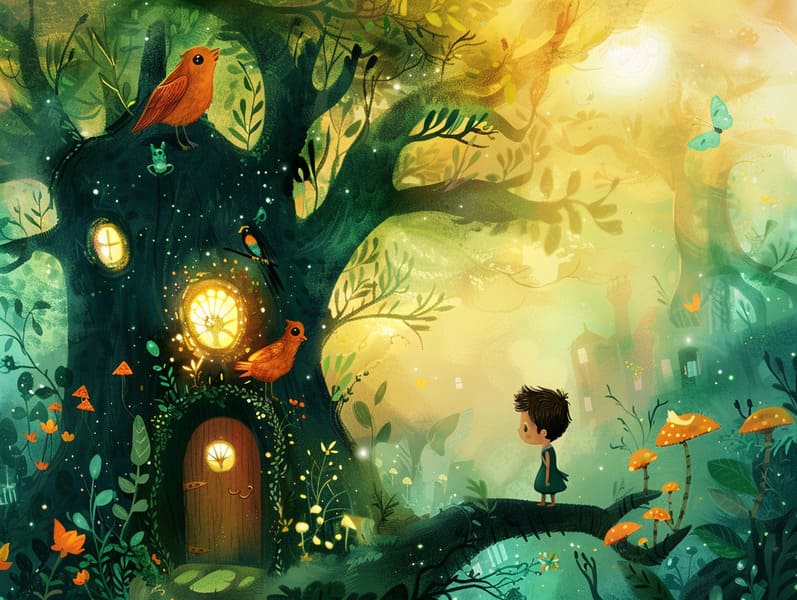The Beginning of Traditional Fairy Tales with Their Immortal Appeal.
The Beginning of Traditional Fairy Tales with Their Immortal Appeal.
Blog Article

Old fairy tales have legendary status. These narratives have been whispered from one generation to the next well before they were ever put on paper. They emerged from a variety of civilizations, including Indigenous traditions. They were initially disseminated among elders, often carrying themes and messages pertaining to the societal norms and beliefs of the time.
The Brothers Grimm, Jacob and Wilhelm (the Grimm brothers), were among the first to compile and release many of these beloved tales. Their anthology, "Grimm's Children's Stories," included tales like "Ashenputtel," "Hansel and Gretel," and "Schneewittchen," which have since become hallmarks in the world of iconic fairy tales. Similarly, Hans Christian Andersen's enchanting narratives, such as "The Sea Maid," and "The Little Duckling," have stolen hearts worldwide, guaranteeing their place in the pantheon of beloved fairy tales.
Despite their age, fairy tales remain as pertinent as ever, especially as children's bedtime stories. These charming stories are now available in numerous formats, including gorgeously illustrated books, enchanting animations, and free fairy tales online.
Their ongoing significance can be linked to several whimsical characteristics:
Valuable Lessons: Ancient fairy tales often teach important moral lessons. Tales like "The Shepherd Boy and the Wolf" teach the virtue of sincerity, while "The Tale of the Tortoise and the Hare" point out the qualities of determination and unpretentiousness. These stories offer young ones clear distinctions between moral and immoral, developing their moral compass in a tender yet profound way.
Kindness and Comprehension: Old fairy tales frequently present personalities facing trials and tribulations, inspiring readers to sympathize with their struggles and rally behind their triumphs. For instance, "The Story of Beauty and the Beast" teaches us the virtue of seeing beyond the surface to see the real person of a individual, fostering tenderness and knowledge.
Cultural Knowledge: Many old fairy tales are rooted in the cultural contexts from which they emerged. Understanding these stories can provide captivating looks into different beliefs, building a sense of global understanding and perception.
Imagination and Innovation: The enchanted elements in old fairy tales—enchanted objects—promote children’s innovative ideas. These stories guide readers to fantastical realms, promoting imaginative ideas and a sense of marvel that endures a lifetime.
Traditional fairy tales are not only captivating but also pedagogical. They provide bewitching tools in cultivating various cognitive and affective skills in young ones. When fairy tales are told out loud, they enhance language acquisition by offering new phrases and complex sentence structures. This practice also fosters listening abilities and attention, as kids keep up with the story, anticipating to see what happens next.
Furthermore, debating the themes and characters of old fairy tales can cultivate problem-solving abilities and thinking skills. Kids are educated to discover patterns, foresee events, and get cause and effect. These debates also contribute to children express their thoughts and feelings, cultivating their emotional intelligence.
In today’s modern era, the existence of online fairy tales has made these stories more attainable than ever. Internet sites and web apps present broad selections of classic fairy tales that can be perused or listened through anytime, anywhere. Fairy tales recited are particularly sought after, making available an charming way for the young to take part in these mesmerizing stories. Audio stories and spoken videos lead characters and settings to life, often enhanced by charming musical scores and tunes that enhance the narrative journey.
The everlasting appeal of traditional fairy tales lies in their ability to shift to current times while keeping their fundamental ideas. Contemporary modernizations of these fairy tales often include more representative protagonists and modern settings, making them meaningful to today’s audience. However, the underlying themes of valor, humanity, and righteousness website remain unchanged, continuing to appeal to young listeners of all ages.
Old fairy tales also offer a sense of peace and familiarity. They distribute a methodical narrative with a transparent beginning, middle, and end, often wrapping up with the culmination of conflicts and the triumph of honesty over deceit. This steadiness can be encouraging for kids, rendering a sense of security in an unpredictable world.
Traditional fairy tales continue to enchant and instruct new generations, maintaining their beauty and value in modern society. As bedtime stories for kids, they render accessible a perfect blend of enchantment and education, nurturing moral values, empathy, and creativity. The existence of internet fairy tales and the prevalence of fairy tales voiced guarantee that these old fairy tales remain acquirable to new generations.
By maintaining and circulating these narratives, we continue to revere the rich tapestry of folklore and cultural heritage. Whether you are accessing a gorgeously illustrated book, enjoying a digital collection, or listening via an audiobook, the majesty of timeless fairy tales is always within reach. These fairy tales reveal of the unwavering magic of storytelling and its ability to connect us across eras and regions.
No matter if you are experiencing a beautifully illustrated book, experiencing a digital collection, or listening through an read-aloud book, the loveliness of classic fairy tales is always within reach.
These stories convey of the timeless nature of stories and its ability to draw us together across epochs and places, creating a bond that captivates and teaches alike.